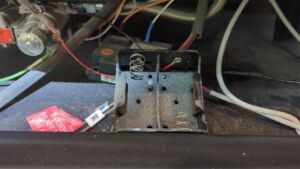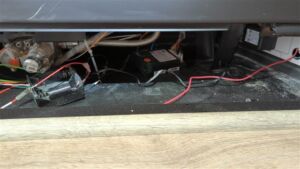
The first step in using the battery-operated igniter is to find the battery compartment in your gas fireplace. This is usually located near the ignition system, which is often behind a removable cover or panel beneath the firebox. Refer to your fireplace’s user manual for specific instructions on locating the battery compartment.
Look for information on the type and quantity of batteries required. Gas fireplaces typically use AA or AAA batteries, but it can vary depending on the model. Ensure you have the correct type and number of batteries.
Open the battery compartment and insert the batteries following the polarity indicated (usually marked with plus (+) and minus (-) signs). Ensure that you insert them correctly to avoid damage to the ignition system. Close the battery compartment securely, making sure it’s properly sealed.

Always follow safety guidelines and precautions provided in your fireplace user manual. Gas fireplaces involve flammable gases, so it’s crucial to operate them safely and ensure proper ventilation.
Over time, batteries will deplete. It’s good practice to replace them regularly or when you notice a decrease in the ignition system’s performance. When electricity is returned to the fireplace, it is recommended to remove the batteries from the battery compartment and store them in a safe location until needed again in the future. This will help save the power stored in the batteries and allow the fireplace to use electricity from the home in times that power is provided.
To maintain consistent and efficient operation, periodically check the battery compartment and ignition system for dust or debris buildup, as this can affect its functionality. Clean as needed, ensuring that the components are free from obstructions.
If the ignition system doesn’t work even with fresh batteries, consult the troubleshooting section in your user manual or consider contacting a professional technician to inspect and repair the fireplace. Always prioritize safety when working with gas appliances. If you are unsure about any aspect of using a battery pack at the igniter for your gas fireplace, it’s best to consult the manufacturer’s instructions or seek the assistance of a qualified technician.
The next time power is lost at your home, follow these steps to still enjoy your gas fueled fireplace. Be sure to keep charged batteries in storage at home in case of emergency situations.
